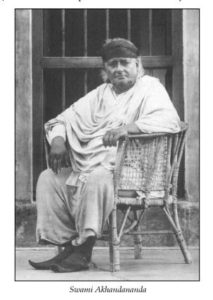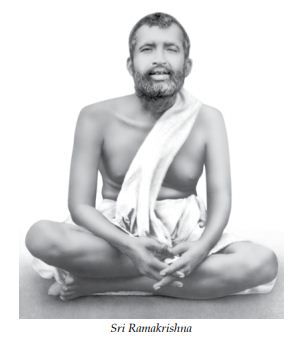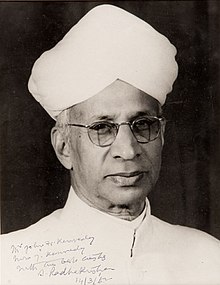—The First Centenary Celebration of Sri Ramakrishna’s Birth
The following article, of much archival and documentary significance, is based on a recorded talk given in the early 1960s by late Swami Sambuddhananda (1891-1974) at the Vedanta Society of Hawaii in Honolulu, USA. Swami Sambuddhananda was a disciple of Holy Mother Sri Sarada Devi. He was appointed a Trustee of Ramakrishna Math and Mission in 1947 and had the distinction of playing a pivotal role in organizing the Centenary Celebrations of Sri Ramakrishna in 1936 and Swami Vivekananda in 1963. This very interesting and informative talk has been thoroughly edited by Swami Bhaskarananda, the Head of Vedanta Society of Seattle, USA. It was first published in Global Vedanta, the English quarterly published from there. We are grateful to the Editorial Board of Global Vedanta for permitting us to reproduce it here.
The idea to celebrate the birth centenary of Sri Ramakrishna came as early as in 1933. In 1934 it was decided by all those attending the meeting of the Board of Trustees of the Ramakrishna Order [Belur Math] that the centenary of Sri Ramakrishna should be celebrated in a befitting manner. They also unanimously decided that from among our monks I should be placed in charge of taking care of the celebration.
But I was not at the headquarters at that time. I was then at our Ashrama in Mayavati [now in Uttarakhand]. As I had not been keeping well I had gone there for a change. After staying there for six months I regained my health and went on a pilgrimage to Kedar and Badri in the Himalayas.
When I came down to our headquarters at Belur Math near Calcutta, I had to take up the work that had been assigned to me. I had hardly two years to prepare for the celebration. As we had no adequate resources of manpower and money, and also due to the fact that the celebration had to be organized all over the world within such a short period, it became a matter of great anxiety and concern for me. Nevertheless, since the work was for Sri Ramakrishna, I took up the work allotted to me without any hesitation.
Having taken up the work, I faced a lot of difficulties. No men. No money. Yet I was told by the Belur Math authorities, ‘You organize the celebration all over the world!’ A wonderful idea indeed! Well, it’s going to be a long, long talk to tell you how things gradually began to take shape. At the beginning, a small sum of 400 rupees was advanced from our Headquarters to meet the necessary expenses, for example, purchasing paper, pencils and ink, as well as printing some letterheads, etc., without which you couldn’t carry on any correspondence. Besides, people also had to be informed that this event was going to take place. After getting that small sum of money the necessary articles were purchased and slowly the work began.
Three committees were formed—the General Committee, the Working Committee and the Executive Committee. In addition, a sub-committee was formed for the Parliament of Religions. The President of the General Committee was Swami Akhandananda, President of the Ramakrishna Order. The General Committee had 64 Vice-Presidents, which comprised many famous people, not only of India, but also of Europe and America. For example, two Nobellaureates—Rabindranath Tagore and Romain Rolland—were among the Vice-Presidents of the General Committee, other than Sir S. Radhakrishnan,1 Sir J.C. Bose2 and Babu Rajendra Prasad,3 just to name a few.
Mahatma Gandhi was alive at that time. I requested him to join the panel of Vice-Presidents. He wrote in reply that he would like to be an ordinary member of the General Committee, and not a Vice-President, because had he taken up any office, it was his principle to do some work for it. But as he would not be able to do any work for the cause, he said that it would be better to keep him as a member. So he was the first member of the General committee.
The Executive Committee was to look after the management of the whole celebration. Manmatha Nath Mukherjee was the Chairman of that Committee, advocate Bejoy Krishna Bose was the secretary, and Rai Bahadur Hrishikesh Mukherjee and myself were the assistant secretaries. Other than being on the Executive Committee, I was also the assistant secretary of the General Committee and the Working Committee. Nevertheless, at first I had to work as the organizing secretary as well.
In the first meeting of the committee, Mr. J. C. Das, who was the treasurer of the General Committee as well as the founder of the Bengal Central Bank of Calcutta, said that he would give me a loan of 5000 rupees from his bank to conduct the work. I didn’t agree to accept any money on loan, because it was against my principle to take any loan. Instead, I asked for donations, particularly from some members and office-bearers of the Executive Committee.
Their total donation received was 700 rupees. For safe custody I deposited the money with the cashier at the Belur Math office. A few days later when I went to get back that money, the cashier said, ‘You took an advance of 400 rupees for your Committee from us. Out of your deposit, we have taken 400 rupees as the refund of that advance. Here is the balance of 300 rupees.’
I was a little bit shocked and surprised. I told him that they should have waited a little longer to get back their money, instead of rushing to get the refund even without asking me.
After a day or two, in the morning a person gave a ring to Belur Math, saying that he wanted to talk to the organizing secretary of the Centenary Committee. When I took up the phone, he told me his name, but I have forgotten that name now. He also told me that he was a ‘Rai Bahadur.’ In British India this title would be given by the government to honour some very distinguished Indians. In the ladder of honour their position was only next to those who were made knights by the British government. He asked me, ‘Are you the organizing secretary?’
I told him, ‘Yes.’
He said, ‘Then I have to tell you something.’
I enquired, ‘What do you want to tell me?’
He said, ‘I want to contribute a little money to the Centenary Fund.’
I asked, ‘May I know how much money you want to contribute to the fund?’
He replied, ‘About 25,000 rupees. It would be better if you kindly come and see me. After talking to you, I’ll be able to decide how to pay you the amount.’
Out of 700 rupees that I had collected as donation I had already lost 400 rupees; only 300 rupees were left. Therefore, this gentleman’s phone call appeared to me to be a godsend!
With great eagerness I said to him, ‘I shall come and see you this afternoon!’
So I went to meet that gentleman. But I couldn’t find any house at the address given to me. I went on knocking from door to door. Nor could anyone help me trace that Rai Bahadur. I think I spent not less than 6 hours looking for the address and the gentleman. But none could be traced!
Absolutely tired, I returned to Belur Math at about 10 o’clock in the evening. For hours I had been walking and running and knocking at one door or the other and inquiring of the whereabouts of that mysterious Rai Bahadur! But all was in vain.
Later I learned that, to have some fun, the whole thing was a prank engineered by a senior monk of our Order. He had asked somebody to pretend to be a Rai Bahadur and give me that call! In spite of my disappointment I found consolation in thinking that at least I made one brother monk happy!

To continue to do my assigned duty I needed some capable assistants. But only one brother monk, named Swami Nityaswarupananda [a disciple of Holy Mother Sri Sarada Devi], could be spared by our Headquarters to assist me. He used to keep the accounts while I had to attend to other duties. We were gradually able to find some suitable accommodation to set up our office at a public building on College Street in Calcutta. Thereafter we moved to our Calcutta office. Aside from this, we also had an office at the Headquarters of our Order in Belur Math. I used to spend the whole morning at the Belur Math office working until lunchtime. Immediately after lunch I would rush to the Calcutta office.
At the Calcutta office I used to work till 9 or 10 o’clock in the evening, and then come back to Belur Math. As the work intensified, more and more assistants came to help me. In this way everything was going on well. At the same time we were also trying to get more funds. As a result, some money also came.
We all knew that the first thing required for such a big worldwide celebration was publicity—propaganda—to adequately inform the public about the event. With regard to the celebration, our main objective was to first celebrate it in Calcutta on a very grand scale. Besides, we would have to organize celebrations, not only in different parts of India, but also in Europe and America. So the volume of our correspondence went on increasing day by day.
At that time, the President of our Order was Swami Akhandananda [a direct disciple of Sri Ramakrishna]. Although the President was not present at that meeting, the committee passed the resolution about celebrating Sri Ramakrishna’s Birth-Centenary. Besides, Swami Akhandananda was opposed to celebrating the birth-centenary of Sri Ramakrishna. He said, ‘There shouldn’t be any birth centenary celebration. Sri Ramakrishna is Brahman—the Supreme Being. He is beyond birth and death.’
But the argument of the Centenary Committee was that they were not trying to observe the birth centenary of the Supreme Being. It was the birth centenary of the Supreme Being’s human incarnation. Nevertheless, the President didn’t agree.
Swami Akhandananda used to love me very much, but ever since I took up the work connected with the Centenary, he became quite indifferent to me. He wouldn’t like to hear anything about the progress of our work. I was in a peculiar situation. I felt that I should continue doing the work that had been given to me. Yet, at the same time I was worried thinking that the work that had been given to me didn’t have the approval of our President. In our Order the President is to be regarded as the representative of Sri Ramakrishna. That’s what Swami Vivekananda also had said. Still the other senior swamis, including the Trustees of the Ramakrishna Order, went on encouraging me to continue doing my assigned duty. (To be continued. . .)
References
- Dr. Sarvepalli Radhakrishnan (1888-1975) was a scholar of comparative religion and philosophy. He was the first Vice-President of India (1952- 1962) and the second President (1962-1967).
- Sir Jagadish Chandra Bose (1858-1937) pioneered the investigation of radio and microwave signaling and optics. He also made very important contributions to plant science
- Dr. Rajendra Prasad (1884-1963), independence activist, Congress party leader, was President of the Constituent Assembly (1948-1950) that drafted the constitution of the Republic of India.
Source : Vedanta Kesari, March, 2015

